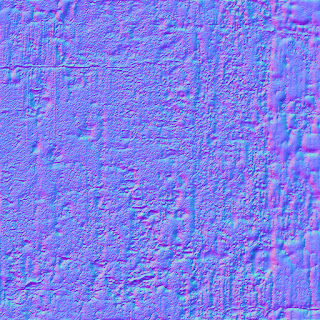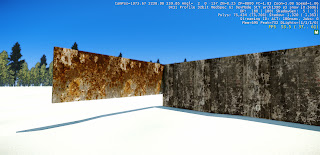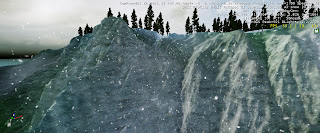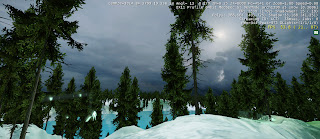Metal Rust:
 |
| Before |
 |
| Bump |
 |
| Spec |
 |
| After |
Concrete Mossy:
 |
| Before |
 |
| Bump |
 |
| Spec |
 |
| After |
Concrete Rough:
 |
| Before |
 |
| Spec |
 |
| Bump |
 |
| After |
Concrete:
What
is the process of making the material?
Concrete is primarily composed of
aggregate (limestone or granite), cement and water. The materials are mixed
together and then poured into a set caste. Once poured it must be placed in a
controlled environment in order for it to dry at a set pace in order to reach
its maximum strength.
How
long will the material last: The material can last for a long time but
effects such as sea water and bacteria can reduce its life span.
What
makes the material corrode? The material corrodes through
actions such as the corrosion of the reinforcement bars within it, sea water,
bacteria and many others.
What
are the material's structural pros and cons? The materials pros are
that it can last a long time and is very easy to make. It is also very strong
in compressive strength. Cons are that
if not set correctly it can crack and its strength is dramatically reduced. It
is also weak in tensile strength.
What
is the material typically used for: The material is typically used for the
supports and columns of buildings such as high rise and multistorey residential.
What
are the material's environmental impacts? These could include the excess
amounts of C02 that is created in trying to mine all the materials
as well as make them into suitable products for cement mixing. Concrete is also
used to create hard surfaces that contribute to surface runoff, which can cause
soil erosion, water pollution and flooding. It is also a thermal heat retainer
which causes increased temperatures in areas full of concrete such as cities.
Glass:
What
is the process of making the material? Glass is a non-crystalline
solid material. The most common is soda-lime glass, composed of about 75% silica
plus NA2O, CaO, and several other additives.
How
long will the material last: The material should last a long time since
not many things affect it. It is very brittle, so as a result if it is placed
in an unstable environment it could crack and/or break.
What
makes the material corrode? As time progresses moisture and bacteria have
an effect on glass. They start to attack its structure which as a result tends
to lead to a murky colour replacing the clear view it provides when new.
As time progresses, many things can add
to the decay of glass. As it is a very brittle material it can crack. Factors
such as high gale winds, rockslides, animals and trees can all cause cracks in
the glass or destroy it completely.
What
are the material's structural pros and cons? The
materials pros include the ability to provide shelter whilst providing a view.
A con is that it is very brittle and after a long time its transparent view can
turn murky.
What
is the material typically used for: The material is mainly used for windows in
order to provide a transparent section in which a view can be seen whilst
providing protection from the outside elements.
What
are the material's environmental impacts? The immense amounts of heat used
in order to create glass produces a lot of C02.
Steel:
What
is the process of making the material? Steel is an alloy made from combining
iron and other elements, the most common being carbon. Iron must be smelted
under intense heat in order to remove the oxygen that is attached to it in its
earth found form, iron ore. The smelting releases the oxygen attaching carbon
to the iron allowing a material that can be mixed with other materials to
produce steel.
How
long will the material last: Steel can last for some time if
maintained properly. Without maintenance steel corrodes from the oxygen in the
air, causing rust.
What
makes the material corrode? Oxygen makes the air corrode. As a
result any environment can cause steel to rust, except for highly dry areas
such as those found in the Arizona desert which contains minute traces of water
meaning rust can’t take effect as easily.
What
are the material's structural pros and cons? Steel can
be made for specific reasons to tackle specific problems and as a result is a
very good structural material. Varying the amount of alloying elements, and the
form of their presence in the steel, controls qualities such as hardness,
ductility and the tensile strength of the resulting steel. One of the only
drawbacks in steel is its increase in weight the larger to pieces become and
the affect that natural elements such as water and oxygen can have on it over
time.
What
is the material typically used for: The material is typically used for columns
and beams since they can be built specifically for tensile or compressive uses.
It is mainly used in high rise buildings, bridges and cantilevered edges.
What
are the material's environmental impacts? To produce steel iron
must be mined and then smelted in order to extract the ore. As a result the
environmental impacts could include CO2 emissions as well as
environmental degradation due to open cut mines.








































